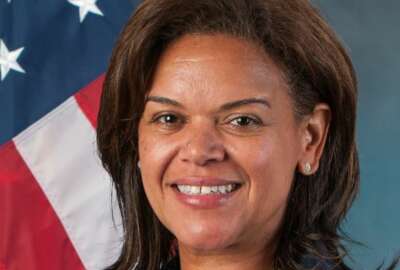Agencies saved about $552B by tackling fragmentation, overlap and duplication since 2011
Federal oversight bodies often look for waste, fraud and abuse. But another trio of witches also bedevils the government: Fragmentation, overlap and duplication...
Best listening experience is on Chrome, Firefox or Safari. Subscribe to Federal Drive’s daily audio interviews on Apple Podcasts or PodcastOne.
Federal oversight bodies often look for waste, fraud and abuse. But another trio of witches also bedevils the government: Fragmentation, overlap and duplication (FOD). The Government Accountability Office’s latest report shows agencies have been able to hack away at FOD, but new instances keep popping up. The Federal Drive with Tom Temin got the latest from the GAO’s director of strategic issues, Jessica Lucas-Judy.
Interview transcript:
Tom Temin: Jessica, good to have you back.
Jessica Lucas-Judy: Thanks so much for having me.
Tom Temin: And we should point out this report is more than just duplicative programs, which are kind of fun to poke fun at. But really, it’s more about generally looking at programs and finding ways to tighten up, even if it’s not duplicated a fair way to characterize it?
Jessica Lucas-Judy: Exactly right. So we know that there are a lot of different federal programs that all maybe are trying to serve similar clients or provide similar types of services. And a lot of what our report highlights are ways that those agencies could work together more effectively. Sometimes it’s sharing information, such as on trade-based money laundering to be able to be more effective and more efficient with their services, or to have a strategy in place to make sure they’re all working towards a common goal and not at cross purposes. So one example of that is in the more than 200 federal programs across 21 different federal agencies, they’re all working on diet-related chronic health conditions. It’s a very important topic you’re dealing with, you know, obesity, and diabetes, and hypertension and other things. And it’s really important that those agencies work together to make sure that they’re achieving those purposes.
Tom Temin: In some ways, this ties into the government’s desire for better customer experience, because if you are a small business, or someone in need of some other type of assistance, sometimes people don’t know where to turn or which government program is the one they should tap on. And maybe they could be consolidated in a logical way so that looks like one program to the public.
Jessica Lucas-Judy: Right. Sometimes it is just a matter of making sure that they’re keeping the end user in mind. And, you know, like I said, working together to get information out and to best serve the populations that they’re working to try to address. Several of the examples that we had in this year’s report, and we’ve been doing this since 2011, so quite a few number of years now, has to do with administrative functions, even just like within the Department of Defense. It has a lot of different programs among the different services to provide food and meals to its employees and contractors across the program. And they’re just different definitions, different ways of tracking costs, and it makes it really difficult to compare across them to figure out what’s most effective or most efficient. So we thought that assessing the effectiveness and efficiency of its program, and having common definitions could help them save potentially millions of dollars while still providing the same service.
Tom Temin: And also in this year’s report, you did note that the government is not unaware of this. It’s not like a big blind amoeba rolling along that a lot of recommendations from prior years’ reports have been carried out, maybe highlight some of those for us.
Jessica Lucas-Judy: Sure. So as I said, we’ve been doing this since 2011. And during that time, we’ve identified almost 1,300 actions that Congress or executive branch agencies could take to address these areas of fragmentation, overlap or duplication, or just to work together more effectively or to achieve some kind of cost savings. And during that time, more than half of those 1,300 actions have been fully addressed. And another 20% or so have been at least partially addressed. So agencies have made really good progress in addressing some of these areas and have achieved about $552 billion in savings to date.
Tom Temin: We’re speaking with Jessica Lucas-Judy, director of strategic issues at the Government Accountability Office. And at the same time, quite a number of new opportunities have popped up, as expressed in this year’s report, maybe highlight some of those for us.
Jessica Lucas-Judy: Some of the bigger ones in our cost savings area, you know, again, Department of Defense, a lot of good opportunities there. Department of Energy as well. This is one that we’ve highlighted in the past, but we found some new actions in terms of pursuing less expensive options for disposing of nuclear and hazardous waste, you know, something that’s very important that this could potentially save tens of billions of dollars. Another one is in skilled nursing facilities within the Department of Health and Human Services. There were some actions that can be taken there to identify nursing facilities that have high rates of potentially preventable hospital readmissions and emergency room visits. And that could save Medicare potentially hundreds of millions of dollars.
Tom Temin: So really Health and Human Services, Defense Department probably emerged as the biggest areas for savings and efficiency opportunities?
Jessica Lucas-Judy: Sure, in our past reports, those have been the ones that have had the biggest savings to date, about half of the savings that I mentioned come from those agencies.
Tom Temin: And one of the newest ones that’s specific in DoD is F-35 Lightning II sustainment. It’s always feels funny to talk about sustainment of something that’s not actually fully combat ready. And yet some of them are so old, they do need to be sustained. What’s going on there?
Jessica Lucas-Judy: Right. So a big part of the cost of any system or piece of equipment is the sustainment, you want to be able to build that in because it needs to be kept up to good working condition. So there’s over a trillion dollars in costs and sustainment. And those estimated costs have been going up every year. And right now, the programs across the service are not affordable in the future. And so we think that reducing the costs and potentially by hundreds of millions, or maybe even billions of dollars over several years could be achieved by developing some kind of strategic approach to make sure that those services can afford to operate the F-35.
Tom Temin: And I wanted to get back to the topic of duplicative programs. And you mentioned one egregious case of 200 programs and 21 agencies having to do with diet and chronic health of Americans. What’s the best approach to that to just consolidate them all into one or two places? To close down some programs and let others take over? How can the government really attack that issue?
Jessica Lucas-Judy: Well, it’s not so much eliminating the programs, but again, making them work together more effectively, and communicate more efficiently and have some kind of strategy in place to make sure they’re all working towards the same types of goals and not getting in each other’s way. That was one example. But we have several others in this year’s report on other topics, ranging from things like high performance computing, and a number of other areas in digital services, law enforcement use of force, again, these are, you know, areas where having common definitions and data systems even could help eliminate some of that fragmentation or the bad effects of the fragmentation, really.
Tom Temin: Right. And you mentioned category management at the General Services Administration. That’s been an endeavor going back some years now. But sounds like there’s still opportunities to save money there in procurement.
Jessica Lucas-Judy: Right. That’s another place that over the years, we’ve continued to highlight, you know, there are agencies working together to be able to contract for common goods and services. And there’s opportunities for cost savings there, we continue to find new opportunities pretty much every single year.
Tom Temin: And one of the overarching impressions I get in looking at the report is that the savings available amount to a pretty substantial portion of the so called discretionary budget every year. So these are not trivial savings, are they?
Jessica Lucas-Judy: No, as I said, we’ve achieved about $552 billion in savings so far, just by implementing the actions that we’ve identified in previous years. And we think still 10s of billions of dollars more in savings could be achieved. And that’s a pretty conservative estimate, we highlight a couple of different examples in the report, I mentioned Medicare before, their payments for Medicare vary depending on where you get the services if they’re in office visits versus other types of evaluation and management visits. And we think that by equalizing the payment rates between the different types of settings, you could get billions of dollars each year. You mentioned also category management, that’s another one with potentially billions of dollars in savings over the years. Some of the other examples that we highlight, disability and unemployment benefits, just making sure that if someone’s receiving benefits through disability insurance that it’s offset for unemployment insurance that they get, and that again, could be more than $2 billion over 10 years.
Tom Temin: Right. So then therefore, the savings can spill over into the so-called non-discretionary areas, too, like direct payments from Medicare or Medicaid.
Jessica Lucas-Judy: Right, all of these are intended to be able to free up resources that then can be used more effectively somewhere else.
Tom Temin: All right. Well, let’s hope people pay attention to this one. I know I do. It’s my favorite one, except for the High Risk List. Jessica Lucas-Judy is director of strategic issues at the Government Accountability Office. As always, thanks so much.
Jessica Lucas-Judy: Thanks so much. Appreciate it.
Copyright © 2025 Federal News Network. All rights reserved. This website is not intended for users located within the European Economic Area.
Tom Temin is host of the Federal Drive and has been providing insight on federal technology and management issues for more than 30 years.
Follow @tteminWFED






